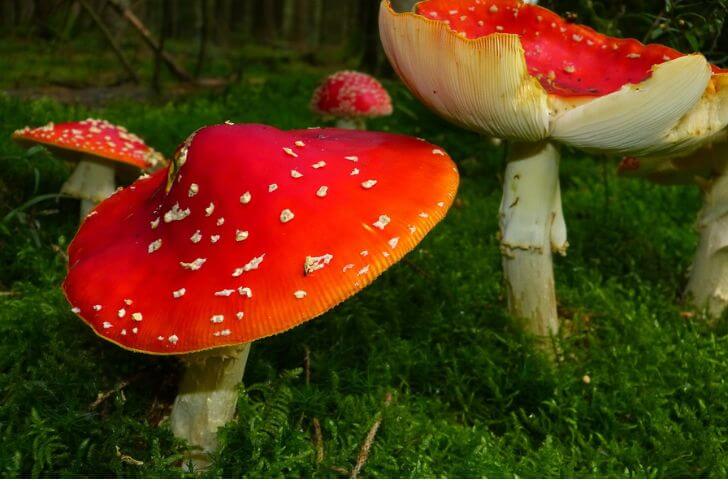If you’re a fan of mushrooms, the Pacific Northwest is the place to be. With its damp, cool climate, the region is home to some of the best mushrooms in the world. From morels and truffles to oysters and shiitakes, there’s a mushroom for everyone in the Pacific Northwest.
So whether you’re a budding mushroom hunter or just looking for a new culinary adventure, be sure to check out the wild mushrooms below.
Pacific Northwest mushrooms Identification
You must practice caution when hunting mushrooms. Only harvest fungi that you can properly identify or better hunt in the company of an experienced forager
1. Pacific Golden Chanterelle
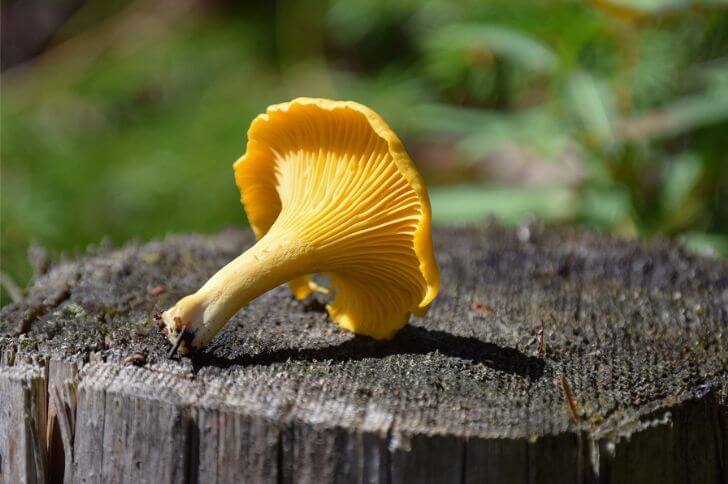
Common found in Oregon and Washington, the Pacific golden chanterelle is a type of edible mushroom that can be found in high elevation forests. It’s only found in the Pacific Northwest and is closely related to the Cantharellus cibarius (golden chanterelle).
Identification:
These edible mushrooms have a soft yellowish-orange color. The cap grows up to 5.5 inches in diameter. Stipe is also the same color as the cap. When picking these mushrooms, it is important to be careful not to damage the delicate caps.
Pacific golden chanterelles are relatively easy to identify, and are often found near conifer trees. Be sure to check around the oaks.
They are considered to be a delicacy by many people, and are often used in gourmet dishes. They can be sauteed, grilled, or even used as an ingredient in soup or stew.
2. Boletus Edulis (California King Bolete)
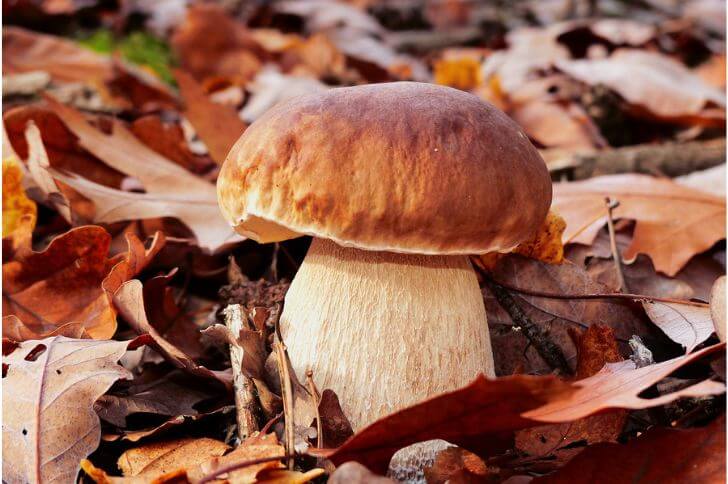
Boletus edulis, also known as the penny bun or cep or porcini is a type of edible mushroom that occurs in parts of the Pacific Northwest.
Identification:
Penny bun mushrooms have easily identifiable features. You can identify them because of their large size and brown cap. Its cap is broad, about 3-12 inches, and slightly sticky. Caps can weigh up to 6 pounds.
The club shaped stalk grows up to 10 inches in height and can match the weight of the cap, making the boletus edulis one of the biggest wild mushrooms.
This Pacific Northwest fungus is often used in cooking, as it has a nutty flavor and meaty texture. It can be found growing on the ground near trees, especially birch and beech trees. When collecting Boletus edulis mushrooms, be sure to only choose ones that are fresh and have not begun to decompose.
3. Shaggy Mane
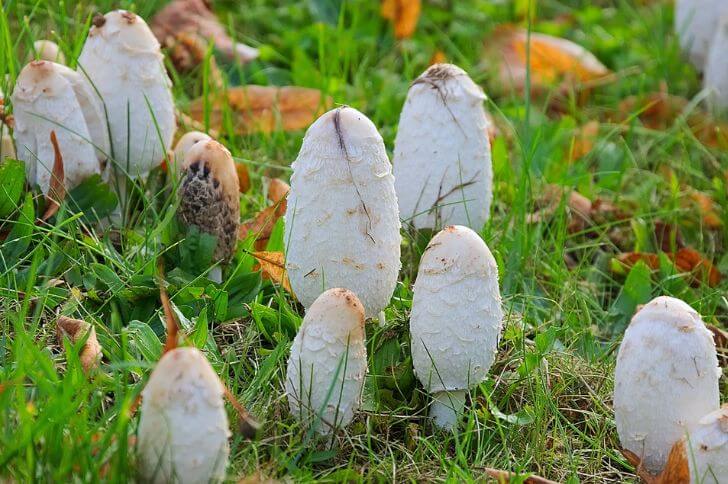
The lawyer’s wig! Yup, the alternative name for the shaggy mane is funny. But, did you know it is edible?
Identification:
Shaggy manes, lawyer’s wigs, or Coprinus comatus are some of the most common wild mushrooms of the Pacific Northwest.
They have distinctive canonical caps that range 2-6 inches in diameter, and white and scaly. Their stems can grow up to 7 inches in height and are hollow. As the mushrooms age, the caps turn black and inky, giving them their name.
Where can you find shaggy mane mushrooms? They are common in Summer and Fall and are found in open grasslands and roadsides. Are they edible? Yes, shaggy ink caps are edible when young.
They have an earthy flavor and have a buttery texture. These edible mushrooms expire fast, so we recommend you saute them before long term storage.
4. Lobster Mushroom
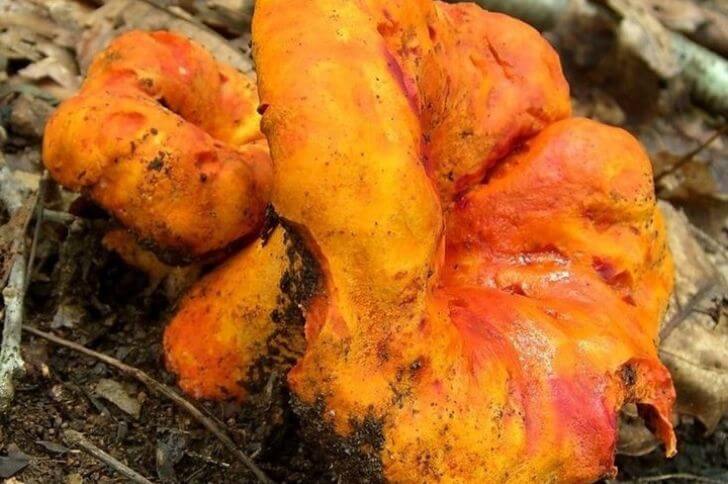
One of the most beautiful wild mushrooms of the Pacific Northwest are the lobster mushrooms. Be on the lookout for:
Identification:
Lobster mushroom is a type of edible fungi that resembles a lobster in both appearance and taste.
They are mostly during the fall season. Lobster mushrooms are reddish-orange and have thick orange flesh.
They grow around hardwood trees and are high in protein, making them a healthy addition to any diet. When cooked, the mushroom has a slightly crustacean-like flavor that makes it a popular choice for stir-frys, pasta dishes, and soups.
5. Turkey Tails (Trametes versicolor)
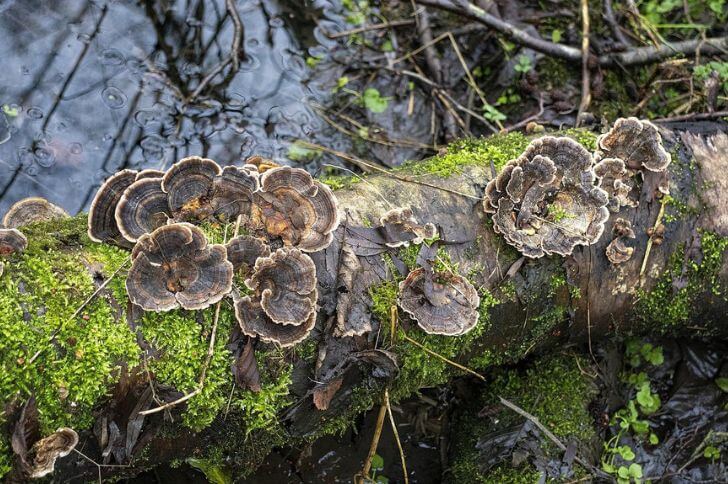
Turkey tails are considered a delicacy in many cultures. From Northern California to western Montana to Washington, these mushrooms can be found throughout the year but are most common in Summer and early fall.
Identification:
Unlike most Pacific northwest mushrooms, turkey tails caps have various colors and resemble the tail of a turkey bird. The flesh is thick; about 3 mm(0.2 inches). Notice the caps overlap each other, forming a large fruiting mass.
Turkey tails are best cooked slowly, over low heat. This allows the connective tissue to break down and the meat to become tender. Long cooking times also allow the flavors of the seasonings to penetrate the meat.
To ensure that your turkey tails are cooked through, use a meat thermometer, inserted into the thickest part of the tail.
If you want to add some extra flavor to your turkey tails, try marinating them before cooking. Marinating for at least four hours, or overnight, will give the flavors time to permeate the meat.
6. West Coast Reishi
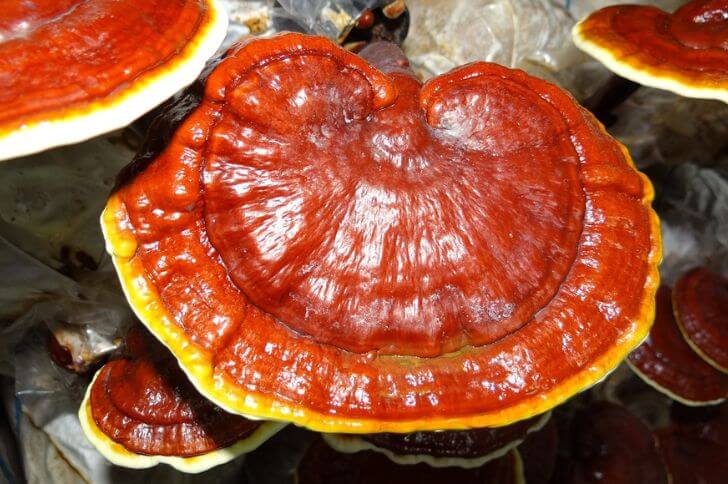
Reishi, also known as the “Mushroom of Immortality”, has been used in Traditional Chinese cuisine for centuries. Today, this ancient edible mushroom is gaining popularity on the West Coast and is a favorite among mushroom enthusiasts.
Identification:
Also called hemlock varnish shelf, these reishi mushrooms grow on hemlock trees. Their kidney-shaped caps range from 1.6-6.3 inches in diameter. They are reddish-orange with a lumpy surface.
Also some mushrooms of this species can have tall stems while others are stalkless. When cut, the reishi has soft white flesh.
Can you eat these West coast mushrooms? Yes, reishi are edible species but due to their woody nature they are hard to cook. We recommend you dry and blend them to a powder and use to make teas.
If you’re looking for a natural way to improve your health and wellbeing, consider trying westcoast reishi. This ancient remedy is safe, effective, and easy to find.
7. Honey Mushrooms
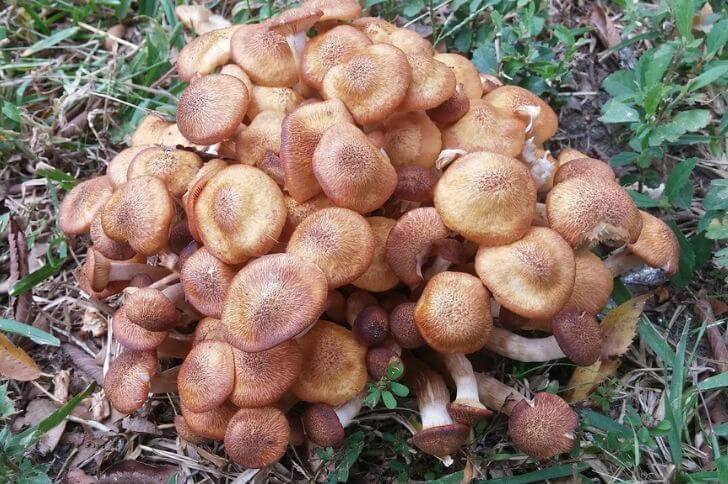
Honey mushrooms are a variety of mushroom that gets its name from its honey-colored cap. This edible species has 9 subspecies and their genus is called Armillaria.
Identification:
These mushrooms are native to Western North America and you can spot them growing on conifers. Honey mushrooms grow in small clusters and have yellow-brown caps that are also sticky like the porcini.
When harvesting honeys, opt for younger mushrooms and we recommend you harvest caps only. They are softer and cook easily.
Honeys are edible, but they are not considered as tasty as porcinis above. Still, these mushrooms are tastier than oyster mushrooms and can be used in soups and other dishes where their flavor will be masked by other ingredients.
8. Western Giant Puffball
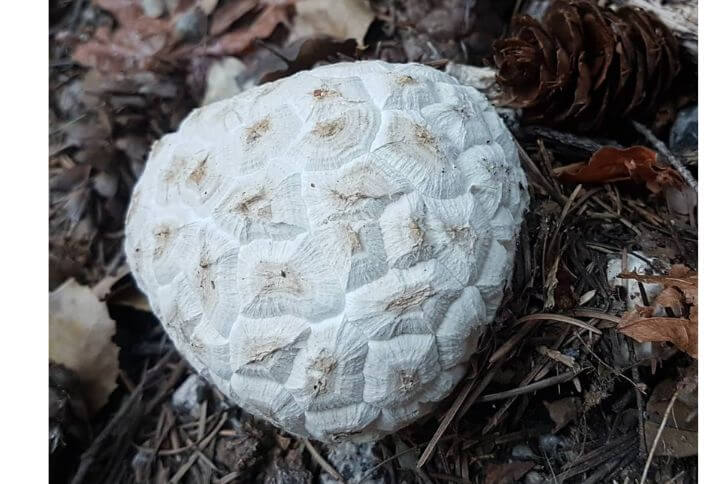
Western giant puffballs are one of the most common and easily identified mushrooms. They can be found in a wide variety of habitats including woods and fields.
Identification:
Western giant puffballs range in size from as few inches as 3.9 inches to 28 inches in diameter. The majority of puffballs are white or cream colored and look like giant brains.
They are stalkless. Are they edible? Yes, western giant puffball mushrooms are edible. Their white marshmallow-like flesh can be cooked in soups. However, you should note that these mushrooms are not easy to clean and are not as tasty as gilled mushrooms.
9. Horse Mushroom
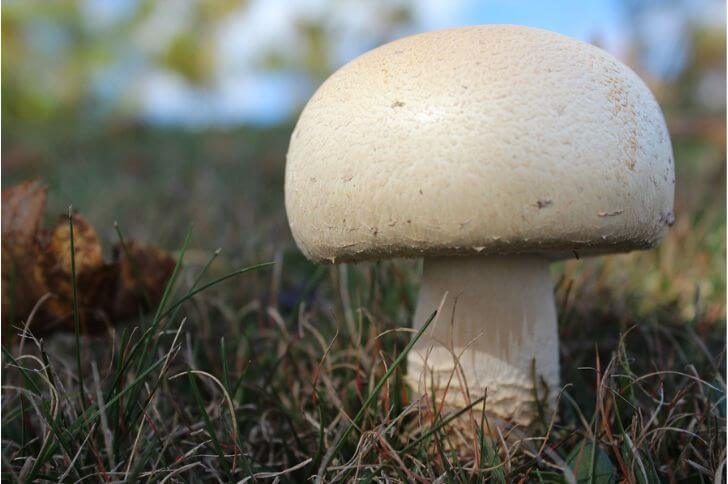
One of the most prized mushroom of the Pacific Northwest are the horse mushrooms. This highly sought after mushroom can be identified by:
Identification:
The horse mushroom is a large, white, fleshy fungus that grows in scattered clusters on the ground in meadows.
The cap is 2.8-7.9 inches in diameter with pink gills underneath. Stem is long, about 5 inches in length. The horse mushroom doesn’t have a distinctive taste and can be eaten raw or cooked.
When collecting these wild edible mushrooms, be sure to look for ones that are fresh and free of blemishes.
10. Bear’s Head Tooth
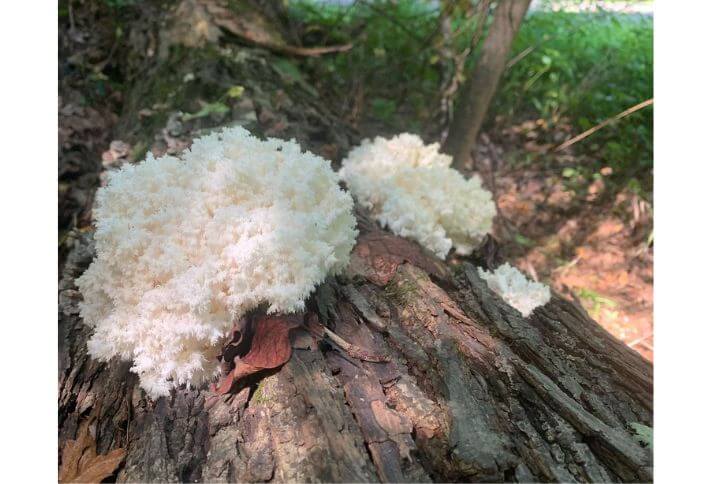
Commonly known as the western coral hedgehog, the bear’s head tooth is a member of the hericium genus. This tooth fungus grows on conifer trees.
Identification:
It gets its name from its shape. Fruiting body is large with long spines. The dangling spines are typically white and a fruiting body can measure up to 12 inches across. Bear’s head tooth mushrooms are edible and you can use them in a curry dish.
11. Western Cauliflower Mushroom
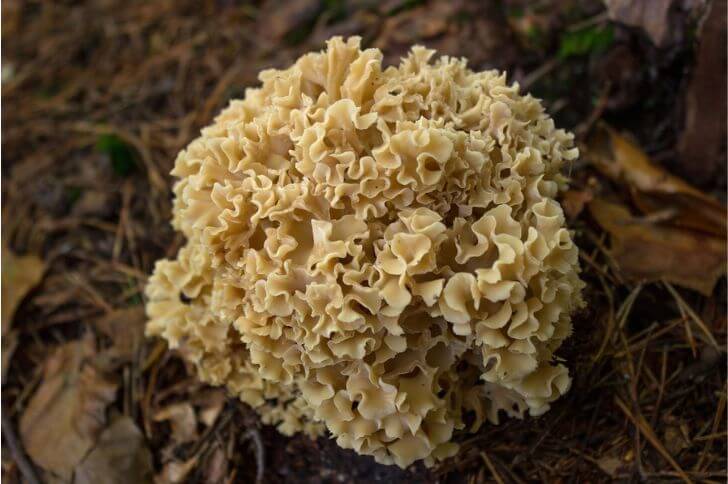
The edible mushrooms we’ve looked at so far are normally found in the wild. Cauliflower mushrooms can be found in the wild too but due to the increase in demand, some mushroom enthusiasts are cultivating them for sale.
Identification:
The sparassis crispa is the common variety found in the Pacific Northwest. They can be found from late summer days to fall. The fungi looks like a cauliflower, hence the name, and feel spongy.
They can range in size from small to large, with the largest ones reaching up to 12 inches in diameter. The undersides of these fungi are typically covered in brownish spores.
Western Cauliflower mushrooms can be eaten raw or cooked. When cooked, they have a sweet flavor and a slightly chewy texture. These mushrooms are a good source of protein, fiber, and vitamins B and C. Cauliflower mushrooms are nice additions to pies.
12. Meadow Mushroom
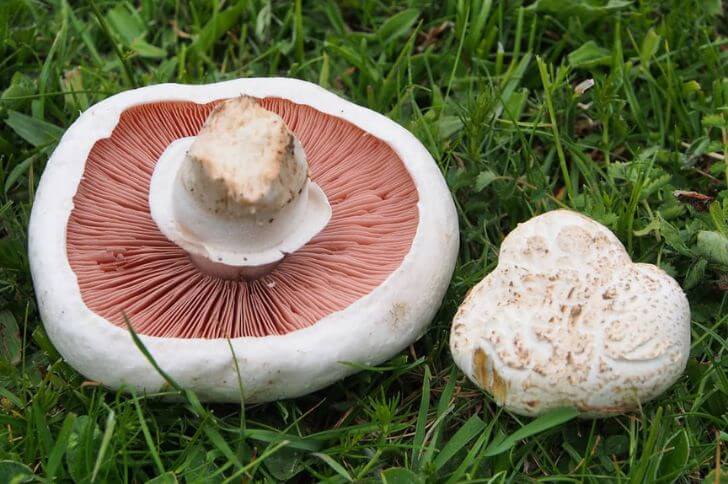
Now to a common mushroom; the meadow mushroom. It is closely related to button mushrooms. You’d think this makes identification easier but mushroom hunters have said it needs some experience.
Identification:
Like button mushrooms they have white caps that flatten as the mushroom ages. Underneath you’ll spot pink gills. Stipe grows about 4 inches long.
When you harvest meadow mushrooms, there is one important thing we recommend you get through before you cook them. Cut the mushroom lengthwise and wait for 15-20 minutes. If the flesh turns yellow, that’s not a meadow mushroom. Throw it out.
So next time you’re out for a walk in the meadow, keep your eyes peeled for these delicious little fungi!
13. Apricot Jelly
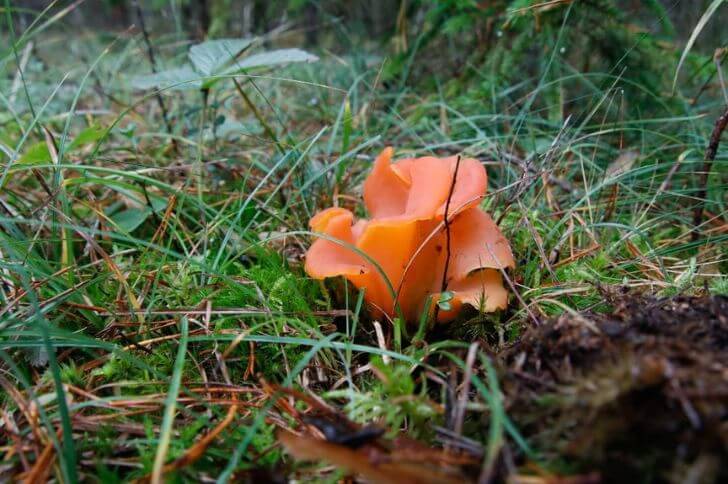
Apricot jelly is the only fungi in the genus Guepinia helvelloides. It is closely related to the commercially cultivated black wood ear.
Identification:
These wild mushrooms have fruiting bodies that are orange-pink, same color as apricots. Their caps are 1.6-3.9 inches and stand at 1.2-6.7 inches.
Also the fruiting bodies are smooth and rubbery. Like most pacific mushrooms they are found in conifer forests where they help in the decomposition process.
Apricot jelly fungi are not harmful to humans and are actually considered to be a delicacy in some cultures. You can find them in summer months.
14. Larch Bolete
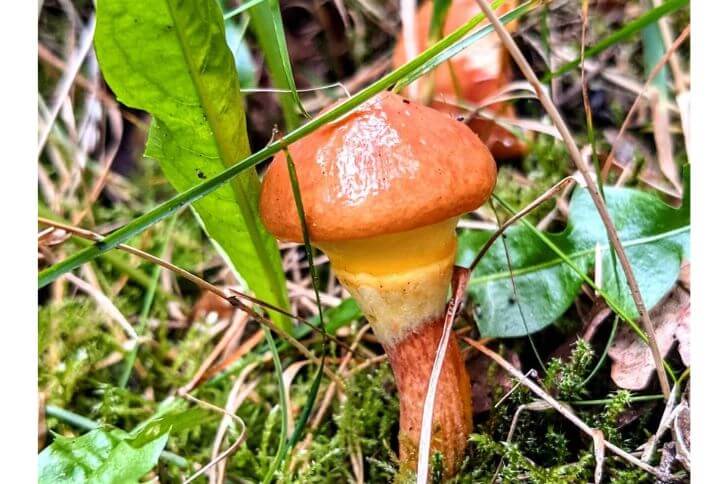
Larch bolete is a species of fungi in the genus suillus. It is also called Greville’s bolete.
Identification:
Larch bolete typically grows around larch trees. The fruit body of the fungus is a large brownish-red mushroom with a stem up to 3.2 inches long and 1-inch thick.
Its thick cap is burnt orange in color and slimy to the touch. It has a spongy flesh that is yellow-orange colored. Larch bolete is edible but not its not as tasty as other boletes.
Also, because larchs hold a lot of water, we recommend you dry them first. You can use larchs in your soups.
15. Brown Shaggy Parasol
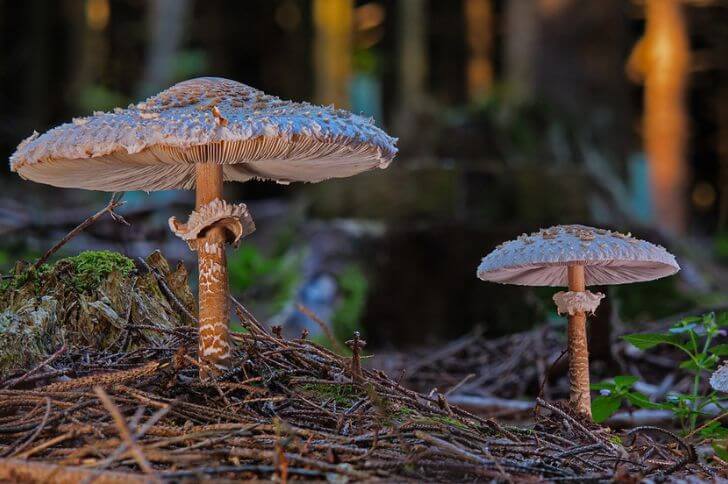
Brown shaggy parasols are a type of mushroom that is often found in gardens or on lawns. If you are looking for a savory wild mushroom, I’d recommend you pick something else from this list. Shaggy parasols may be edible but have no distinctive taste.
Identification:
This mushroom has a brown cap and a white stem, and the spores are also white. The brown shaggy parasol is not poisonous, but we recommend you cook well before eating.
Also, if you are not experienced in picking these brown mushrooms, we recommend you go for other types that are easily identifiable.
16. Blewit
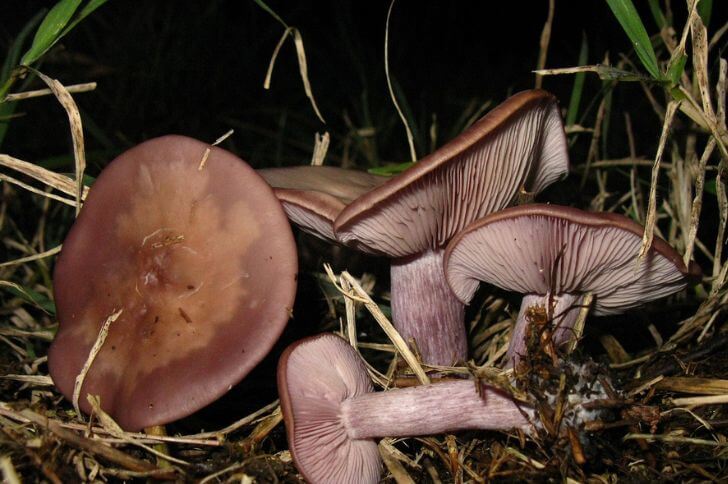
Know some purple mushrooms? The Blewit is a mushroom that has a long history dating back to ancient Greece. It is a purple mushroom.
Identification:
When gathering blewits, you should be on the look for:
- These wild mushrooms are common in October and can be found in winter too
- Their convex-shaped cap is smooth with a brownish middle and purple margins
- Below the cap are close purple gills and thick stalk
- In the Pacific Northwest, they are found around oaks and decomposing
Like many mushrooms on this list, it is a popular choice for culinary use due to its firm texture. The Blewit can be cooked in many different ways and is often used in soups and stews.
17. Fairy Ring Mushrooms
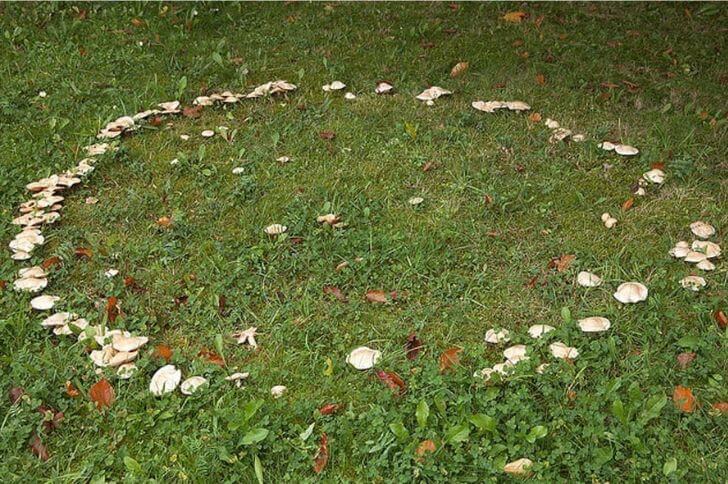
Looking to make some mushroom cookies? Fairy ring mushrooms are sweet, making them the perfect mushrooms to use when baking.
Identification:
Fairy ring mushrooms typically have a whitish or light brown colored cap. They are common in grassy areas or woodland, growing together to form small and large circles. Fairy rings can be quite small, only a few inches in diameter.
Fairy ring mushrooms are found all over the Pacific Northwest. They are particularly great for stews and soups.
18. Rainbow Chanterelle
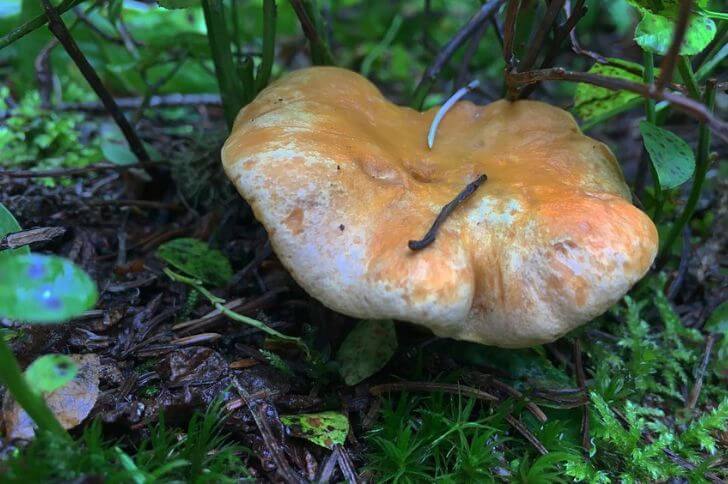
Cantharellus roseocanus or the Rainbow chanterelle mushrooms are one of the most delicious fungi on earth.
Identification:
They get their name from their vibrant colors, which can range from yellow to orange to whitish. And they’re not just pretty to look at – they’re also packed with flavor. Some say they taste like a cross between apricots and peaches, with a slightly peppery finish.
If you’re lucky enough to find some rainbow chanterelles, be sure to cook them quickly. This will help preserve their delicate flavor and texture.
One of the best ways to do this is to saute them in butter or olive oil over high heat for just a few minutes. Then add them to your favorite recipe – they make a great addition to pasta dishes, risottos, and soups.
19. Western Matsutake
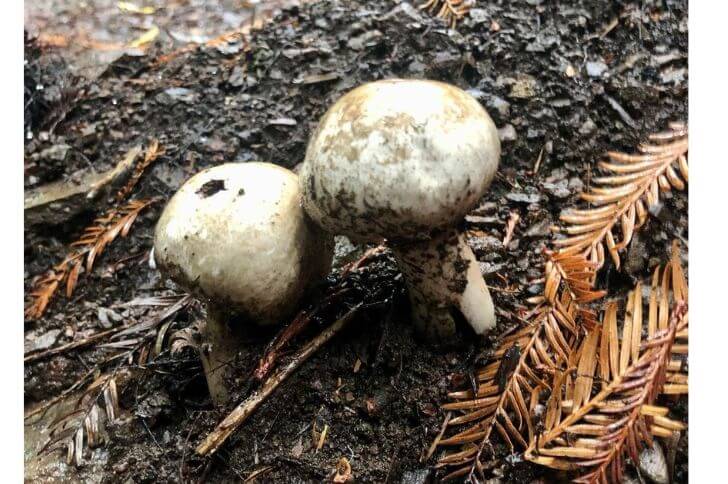
Another common California fungi is the western matsutake mushroom. Where to go mushroom hunting for this species? There are plenty in the Rocking mountains.
Identification:
The western matsutake mushroom is prized for its intense flavor and aroma and is used in a variety of dishes. The nearly flat cap is 2-3.9 inches with narrow short gills.
While the western matsutake mushroom is not as widely known as its Asian counterpart, it is becoming increasingly popular among chefs and home cooks alike.
This mushroom has a strong, earthy flavor that pairs well with meats and other hearty dishes. It can be grilled, roasted, or sauteed, and makes an excellent addition to stews and soups.
FAQs
What type of mushrooms grow in the Pacific Northwest?
Some of the most popular mushrooms that grow in the Pacific Northwest are chanterelles, oysters, and shiitakes. However, there are many other types of mushrooms that can be found in this region.
Some of the less common mushrooms include morels, lobster mushrooms, and black trumpets. While these mushrooms are not as well-known, they can still be found growing in the wild.
Mushrooms are a type of fungi that generally thrive in moist environments. This is why the Pacific Northwest is such a good place for mushroom hunting. With its damp climate and diverse landscape, the region provides an ideal habitat for many different types of mushrooms.
What mushrooms are found in Washington state?
Common mushrooms in Washington include:
- Hedgehog mushrooms
- King bolete
- Turkey tails
- Fly agaric
- False morels
- True morels
- Chicken of the woods
- Chanterelles
- Black trumpet
- Oyster mushroom
What are the easiest mushrooms to identify?
The white button mushroom is one of the most common and easily identifiable mushrooms. They have a smooth, white cap and stem with a small footprint.
Portobello mushrooms are another easy to spot mushroom. They are larger than white button mushrooms and have a dark brown cap with a diameter that can range from 4-6 inches. The stem is also dark brown and has gills on the underside of the cap.
Oyster mushrooms are yet another type of mushroom that is relatively easy to identify. They get their name from their oyster-like shape and have a whitish cap with wavy edges.
Sources:
Hi There,
My name is Jenny. I’m the Chief Editor at Try Green Recipes and besides making yummy and healthy foods for my kids, grandkids, and friends. I’m new to the blogging world but I believe what I have to share is unique and will bring joy to your home. If you are adventurous and want try something tasty, let’s get started.

